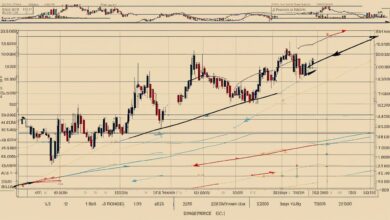Limit Order Vs Market Order: Here Are The Differences

Welcome to our comprehensive guide on the differences between limit orders and market orders. As experienced investors, we understand the importance of choosing the right order type for your trades. In this article, we will explore the key distinctions between these two popular order types and help you make informed decisions for your investment strategies.
Key Takeaways
- A market order aims to execute quickly at the current market price, while a limit order sets a specific price for buying or selling.
- Market orders offer a higher likelihood of execution but no price guarantees, while limit orders may not be filled if the specified price is not met.
- Market orders are suitable for stable investments, while limit orders are more appropriate for volatile assets.
- Market orders are best used for large-cap stocks, futures, or ETFs, while limit orders provide more control over buying and selling prices.
- Market orders are easy to set up, but they can move the market significantly and result in unpredictable prices outside of normal trading hours.
Now that we have outlined the key takeaways, let’s delve deeper into the specifics of market orders and limit orders. Understanding their pros and cons will empower you to make more confident investment decisions.
Understanding Market Orders and Limit Orders
When it comes to executing trades in the financial markets, investors have two main types of orders at their disposal: market orders and limit orders. Each of these order types has its own advantages and considerations, making it important for investors to understand their differences and use cases.
Market Orders
A market order is a type of order that instructs the broker to execute a trade at the best available price in the current market. It is best suited for situations where immediate execution is desired, such as when trading large-cap stocks, futures, or ETFs. Market orders offer the advantage of quick execution, ensuring that investors can enter or exit positions without delay.
However, market orders may not be ideal for thinly traded or highly volatile assets. In such cases, market orders can result in slow fills or disappointing prices. Additionally, market orders have the potential to move the market significantly, especially when trading outside of normal trading hours. Therefore, it is important for investors to consider the liquidity and volatility of the asset before opting for a market order.
Limit Orders
On the other hand, a limit order is an order type that allows investors to specify the price at which they are willing to buy or sell an asset. This provides more control over the execution price but does not guarantee immediate execution. Limit orders are often used when investors have a specific price in mind or when trading highly volatile or thinly traded assets.
While limit orders offer the advantage of control, they also come with certain considerations. For instance, if the specified price is not met, the order may not be filled. Additionally, limit orders can be forgotten or partially filled, as the price may not reach the desired level. Therefore, it is important for investors to keep track of their limit orders and adjust them if necessary.

Advantages and Disadvantages of Market Orders and Limit Orders
When it comes to trading stocks or other financial instruments, investors have two primary order types to choose from: market orders and limit orders. Each order type has its own set of advantages and disadvantages that should be considered before making a decision.
A market order is a transaction that is executed immediately at the current market price. The main advantage of a market order is its high probability of execution, as it prioritizes speed. Market orders are best suited for investors who want to buy or sell quickly and are less concerned about the specific price at which the trade is executed.
On the other hand, limit orders allow investors to set a specific price at which they are willing to buy or sell an asset. The main advantage of a limit order is that it provides more control over the execution price. This can be beneficial when trading highly volatile assets or in situations where a specific price target is desired. However, it’s important to note that limit orders are not guaranteed to be executed if the specified price is not met.
| Market Orders | Limit Orders | |
|---|---|---|
| Advantages | High probability of execution | Control over execution price |
| Disadvantages | Potential for price slippage | Not guaranteed to be executed |
Market orders can be advantageous for investors who want immediate execution and are trading stable, highly liquid assets. However, they come with the risk of price slippage, especially in thinly traded or highly volatile markets. Limit orders, on the other hand, offer control over the execution price but may require waiting for the specified price to be met and can be forgotten or partially filled.
Ultimately, the choice between market orders and limit orders depends on the specific circumstances of the trade and the investor’s trading objectives. It’s important to consider factors such as liquidity, volatility, and the desired level of control when deciding which order type to use. Additionally, other order types, such as stop orders or stop-limit orders, may also be worth considering for certain trading strategies.
Choosing the Right Order Type for Your Trades
The decision between a market order and a limit order relies on the specific circumstances of your trade. For most investors, most of the time, market orders are the default choice. They are user-friendly and provide immediate execution.
However, if you have a particular price in mind or you are trading highly volatile or thinly traded assets, limit orders offer more control. With limit orders, you can wait for the desired price to be met before executing the trade. It is also worth considering other order types, such as stop orders or stop-limit orders, based on your trading strategies and objectives.
When it comes to market order vs limit order, there is no one-size-fits-all approach. Each order type has its advantages and disadvantages, and it is crucial to assess your specific needs before making a decision. Keep in mind that understanding the differences between market orders and limit orders, as well as the risks associated with each, is essential to make informed trading decisions.







